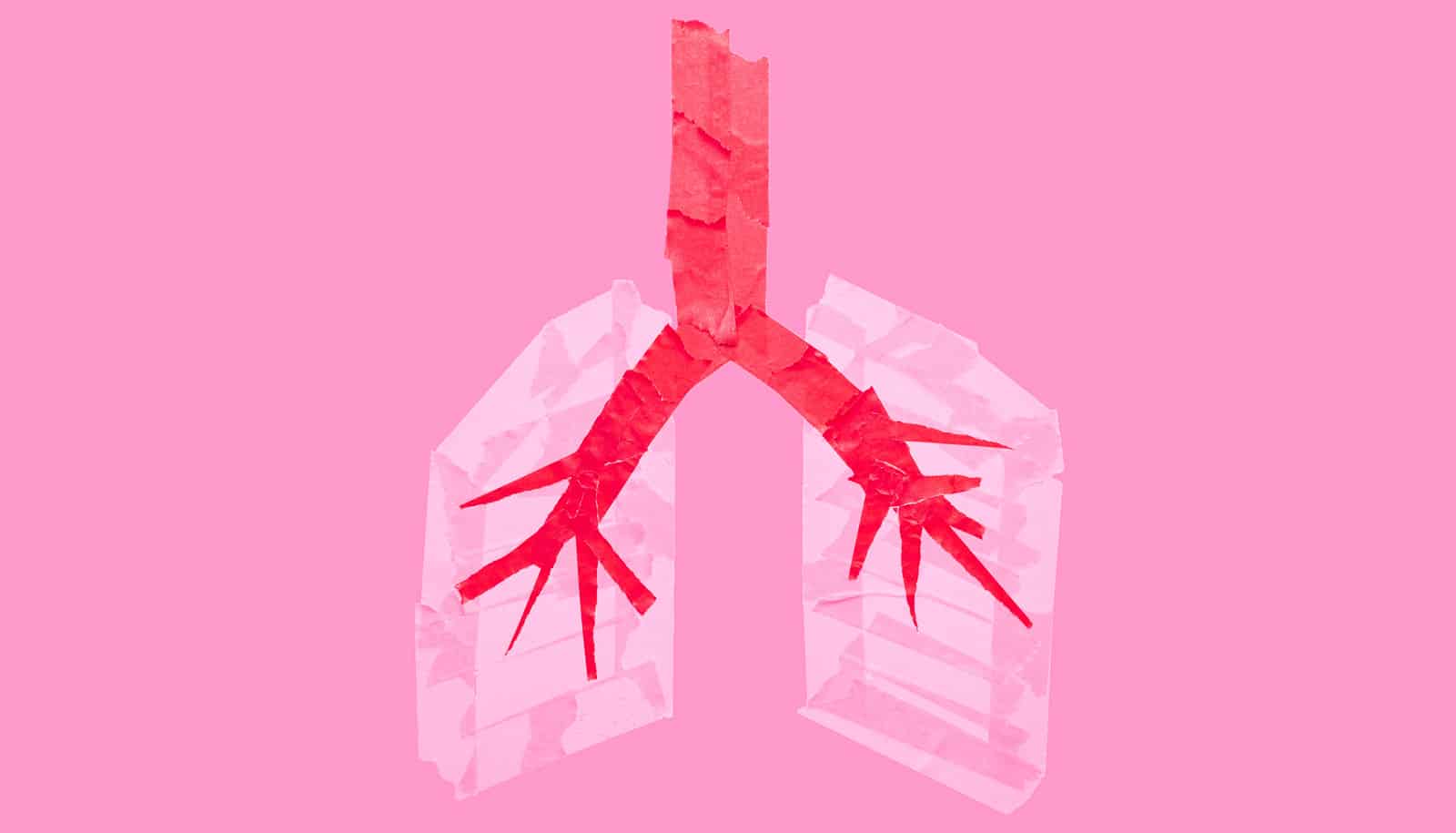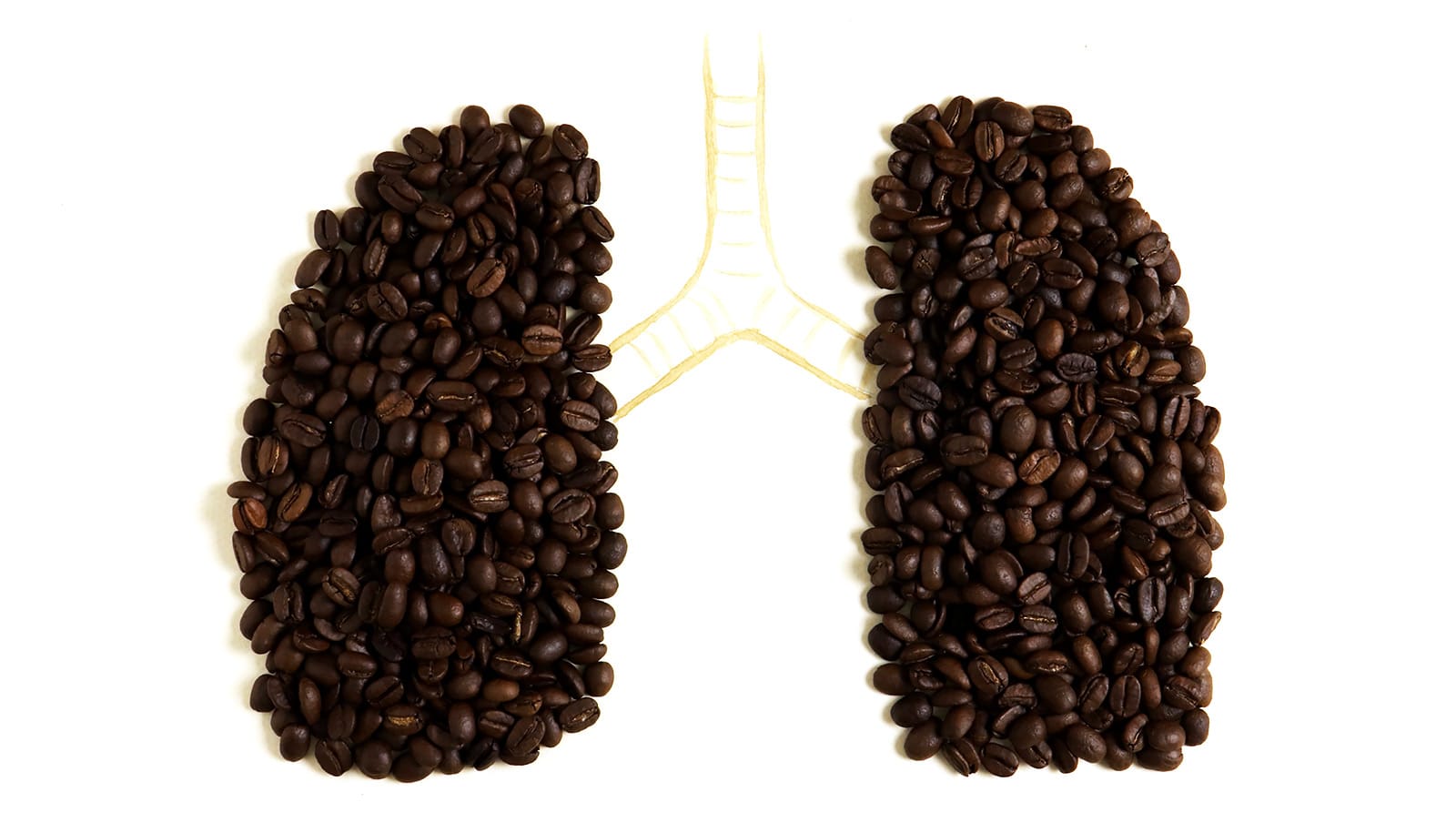A prospective study indicates the health risks of having smaller airways relative to one’s lungs, a condition called dysanapsis.
In particular, people with dysanapsis would be more at risk of dying from chronic obstructive pulmonary disease (COPD), lung cancer, and atherosclerotic cardiovascular disease (ASCVD)—the three leading causes linked to smoking and air pollution.
The findings, which have important implications for lung health in the 21st century, appear in the European Respiratory Journal.
Dysanapsis corresponds to a developmental mismatch between the airway tree and lung size that can be assessed by CT scan and observed in early adulthood. As people grow, their airways normally develop in proportion to their lungs, but in some people, the airways do not get as large as expected.
“Previous studies have demonstrated associations between lung structure and mortality among heavy smokers, where lung structure may reflect the cumulative effects of smoking. Our study now demonstrates associations between native lung structure and mortality in a general population sample, including among never smokers,” explains Benjamin Smith, senior author of the study and a scientist in the Translational Research Program in Respiratory Diseases at the Research Institute of the McGill University Health Centre (RI-MUHC).
Smaller airways
This study included over 6,500 participants to the Multi-Ethnic Study of Atherosclerosis (MESA), a cohort that includes men and women from six different regions of the United States, who had a mean age of 62 years when they enrolled in the study in 2000.
Study participants were followed from 2000 to 2018 and classified into four quartiles according to their airway-to-lung ratio, from small to large. On the dysanapsis spectrum, a small airway-to-lung ratio refers to an individual with smaller airways than normal, and a high ratio refers to an individual with larger airways than normal.
Overall, there were 1,635 deaths, including 232 from ASCVD, 128 from lung cancer, and 59 from COPD.
The researchers found that the lower the airway-to-lung ratio, the higher the number of deaths (515 deaths in the lowest quartile, versus 323 in the highest). There were 60.1 excess deaths per 10,000 person-years (equivalent to 1,000 people followed for 10 years) in the smallest quartile compared to the largest—indicating a significantly higher all-cause mortality.
Non-smokers, too
Strikingly, the association between a small airway-to-lung ratio and higher mortality was evident in both never-smokers (35.8 excess deaths per 10,000 person-years) and ever-smokers (94.3 excess deaths per 10,000 person-years).
“The associations we observed between smaller airway-to-lung ratio and higher mortality were independent of demographics, body size, and potential confounding factors, such as racial or ethnic ancestry, and exposure to air pollution and tobacco,” notes Motahareh Vameghestahbanati, first author of the study and internal medicine resident.
“These new findings suggest that excess mortality associated with airway structure is not due exclusively to smoking-induced structural changes, and may instead result from a developmental trait that increases susceptibility to death from pulmonary and non-pulmonary conditions,” adds Vameghestahbanati, who recently completed her PhD at the RI-MUHC.
“This is the first study to examine the relationship between measures of airway lumen caliber and mortality in the general population and, notably, among non-smoking individuals,” emphasizes Smith, who is also a respirologist at the Montreal Chest Institute of the MUHC and an associate professor in the department of medicine at McGill University.
“A provocative implication of this work is that it provides evidence that ‘all airway trees are not created equal’ vis-à-vis susceptibility to inhaled noxious aerosols (e.g. tobacco smoke, air pollutants), opening research avenues to understand and promote resilient lung development and maintenance across the lifespan,” he adds.
Source: McGill University



